Road Affair is reader-supported and may earn commission from purchases made through links in this article.
There’s just something about Spain. Everything about the country is extremely inviting for travelers looking for new experiences, new foods, and to see things they’ve never seen before. With a culture all its own and a remarkable blend of histories, it can seem like no two places in Spain are quite the same.
Of course, that makes it tough when you’re trying to decide what to do in Spain in 10 days. How do you pack in all these different experiences and make it to all the best places to visit in Spain in just 10 days? Well, you start right here with our Spain itinerary and let us guide you through the planning process for your trip. That way, you can quit worrying and jump right to counting down the days until you arrive.
Contents
- 1 Entry Requirements for Spain
- 2 Best Time to Visit Spain
- 3 How to Get Around Spain
- 4 Accommodation in Spain
- 5 The Perfect 10-Day Spain Itinerary
- 6 Day 1: Madrid
- 7 Day 2: Madrid
- 8 Day 3: Seville
- 9 Day 4: Seville
- 10 Day 5: Granada
- 11 Day 6: Valencia
- 12 Day 7: Valencia
- 13 Day 8: Barcelona
- 14 Day 9: Barcelona
- 15 Day 10: Barcelona
- 16 Day 11+
Entry Requirements for Spain
Spain is part of the Schengen Area, which means that citizens of the US, Canada, New Zealand, Australia, and many more countries can travel to Spain visa-free for up to 90 days in any 180-day period. If you are not from one of the visa-exempt countries or if you want to stay longer to work or study, you will need to apply for a visa at your local Spanish embassy or consulate.
Best Time to Visit Spain
Of the many things you need to work out when planning your trip is when to visit. Depending on the season you come, you’ll be greeted with different weather and levels of crowdedness. That makes the best time to visit Spain harder to pin down as it’s strongly tied to your own travel style and preferences.
Many seem to think that summer is the obvious choice for a trip to Spain. Longer days and sunny skies can be perfect for sightseeing and outdoor dining at restaurants. But don’t underestimate how hot Spain can get in summer or the problems destinations like Barcelona have had with over-tourism. Summer is also when locals often take their holidays, amplifying the feeling of too many tourists.
A far more enjoyable time to visit Spain is the shoulder season, either side of summer. By coming for a visit in April through June, or September and October you will skip the crowds and sweltering heat of high season. In their place, you should be met with perfect weather for the outdoors, and more reasonable lines at major attractions.
Now, if you’re looking for a winter escape then Spain may well be your answer. Noticeably warmer than most of Europe at this time, you shouldn’t have any problem sightseeing in the cool weather or finding more affordable accommodation. The only thing to keep in mind with winter is that certain attractions may have reduced opening hours.
Check flights to Spain from the USA (from $252) and UK (from £20)
How to Get Around Spain
Though you may not realize it before visiting Spain, Spain is actually a fairly large country. With an Spain itinerary like this one, you’ll be doing your fair share of travel to get from one place to another and you have options of how you choose to do so.
For the most freedom in following and personalizing your Spain itinerary, renting a car is the way to go. With a rental car, you have the ability to leave when you want, stop when you want, and go where you want. Of course, that does mean shouldering the responsibility of navigating and finding parking places. If you are driving, always check with your accommodation whether they have parking available and whether or not it’s free.
Recommendation: To get the best rate on your rental car, we recommend you check out RentalCars.com. They search and compare rental prices from all major rental companies in Spain, so you can rest assured that you’re getting the best possible price on your rental car.
Driving isn’t for everyone of course, and that’s where Spain’s public transportation networks come in. Spain actually has a high-speed train network that easily rivals its neighbors in western Europe. With Renfe you can hop aboard intercity trains and actually get from point A to point B much faster than if you were driving. The downside is that you pay for that convenience.
A far more budget friendly approach to traveling around Spain is to use the various bus companies which connect the country. Taking the bus is generally much cheaper than the train, but has the downside of being by far the slowest means of transport.
A better alternative in some cases is to use a carpooling service like BlaBlaCar which helps you cut costs without losing too much time on the road.
Accommodation in Spain
Just as important as figuring how to get from one place to the next is working out where to stay in Spain. Finding the right accommodation can not only save you time and money, but can also drastically influence the enjoyment of your trip. There’s nothing worse than winding up in rotten accommodation and having it sour your holiday.
It goes without saying that you should book in advance if you plan on going to Spain during high season. Do that and you’ll have your pick of accommodation, no matter your budget or the style of accommodation you prefer.
Part of what’s great about the best places to stay in Spain is that they aren’t limited to budget hostels or high-end hotels. You can find all sorts of places to stay, although you may need to search for them through different websites. If you’re looking for budget, backpacker accommodation Hostelworld is where you’ll find hostels with dorms and private rooms. Otherwise, just check out our list of the best hostels in Madrid and Barcelona.
Booking.com on the other hand, has everything from guesthouses and bed & breakfasts to hotels and apartments. With a huge selection for each of these destinations, you won’t have trouble finding a place to stay. If you want to enjoy a more local experience, staying with others or in a furnished apartment, Airbnb is the place to look. Also, with Airbnb, you can save money with our $55 off coupon!
If sifting through page after page of listings doesn’t appeal to you, there are recommendations for accommodation at each stop on your Spain itinerary included here.
The Perfect 10-Day Spain Itinerary
Following this guide, you’ll journey from the nation’s capital of Madrid, down to the intoxicating Andalusian city of Seville. With a stop in Granada to take in the Alhambra, you’ll then head to the cultural dynamo that is Valencia before finishing up in beloved Barcelona.
This trip will take you across much of Spain, seeing all the variety and complexities of the Iberian peninsula. You’ll soon find that this is a wonderful first glimpse into the country and no doubt leave you eager to return for more.
However, before we get to our Spain itinerary, we just wanted to remind you to purchase travel insurance. You never know what will happen and, trust us, you do not want to get stuck with thousands of dollars in medical bills. As a wise man once said, “If you can’t afford travel insurance, you can’t afford to travel.” So don’t leave home without it.
SafetyWing offers travel insurance for only about $10 a week, making it a no-brainer to get. You can get a quick, non-binding quote below:
SafetyWing is, of course, not the only option available. Two other popular alternatives are World Nomads and Heymondo.
Ok, now here is our Spain travel itinerary that will show you how to plan for your 10 days in Spain so that you experience as much as possible.
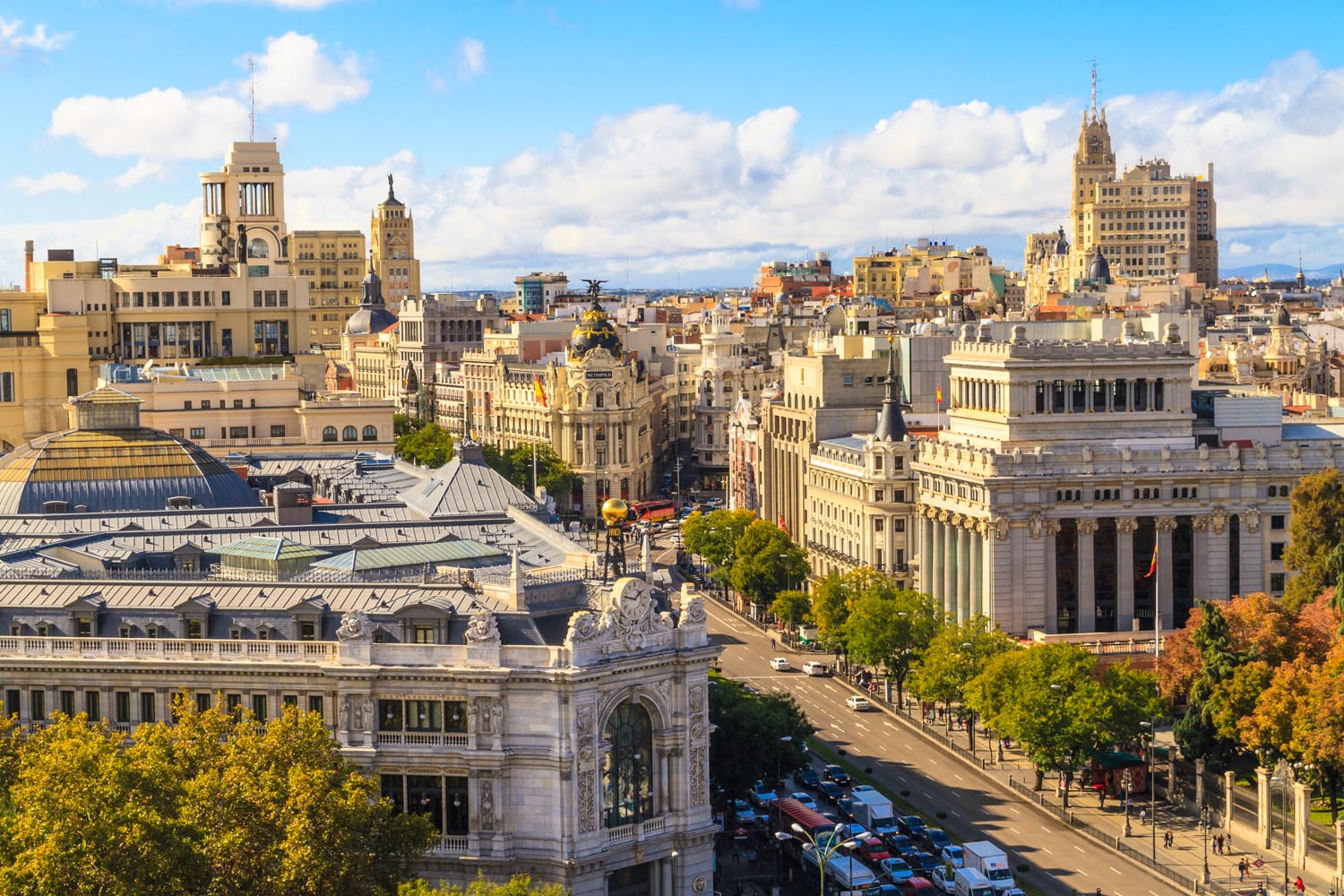
Day 1: Madrid
Your journey through Spain begins in Madrid. Spain’s capital city, Madrid is often an underrated destination despite being a modern center of culture and home to a fair share of grandiose landmarks. Madrid makes a great place to start as you begin to familiarize yourself with Spain and its way of life.
As good a place as any to start in Madrid is the Puerta del Sol, a lively square in the center of the city. As you get a sense for the city’s bustling energy, head to the other prominent square nearby, Plaza Mayor. Right in Madrid’s old quarter, this square is surrounded on all sides by grand buildings that have portico arcades running through them.
Continuing on, it’s not long until you reach the Royal Palace of Madrid with its 3,000+ rooms inside. Walk around its gardens outside or tour through the interior rooms of this royal residence. Just across the way the sight of Templo de Debod, an ancient Egyptian temple moved here, provides quite the contrast. Both give you great access to Gran Vía, the striking boulevard which pierces through much of Madrid.
Over on the massive grounds and gardens of Parque del Buen Retiro you can stroll around, away from the noise and bustle of the city. A walk in the park can also bring you through to the Prado Museum, a world-famous art museum full of masterpieces by artists from the Spanish Golden Age, as well as the Italian and Flemish schools. This is definitely a highlight of Madrid. Keep in mind that the lines for the Prado Museum can get quite long, especially during high season, so it might be a good idea to get your skip-the-line tickets in advance.
Best Places to Stay in Madrid:
Way Hostel • Ayre Gran Hotel Colón • Apartamentos Caballero de Gracia
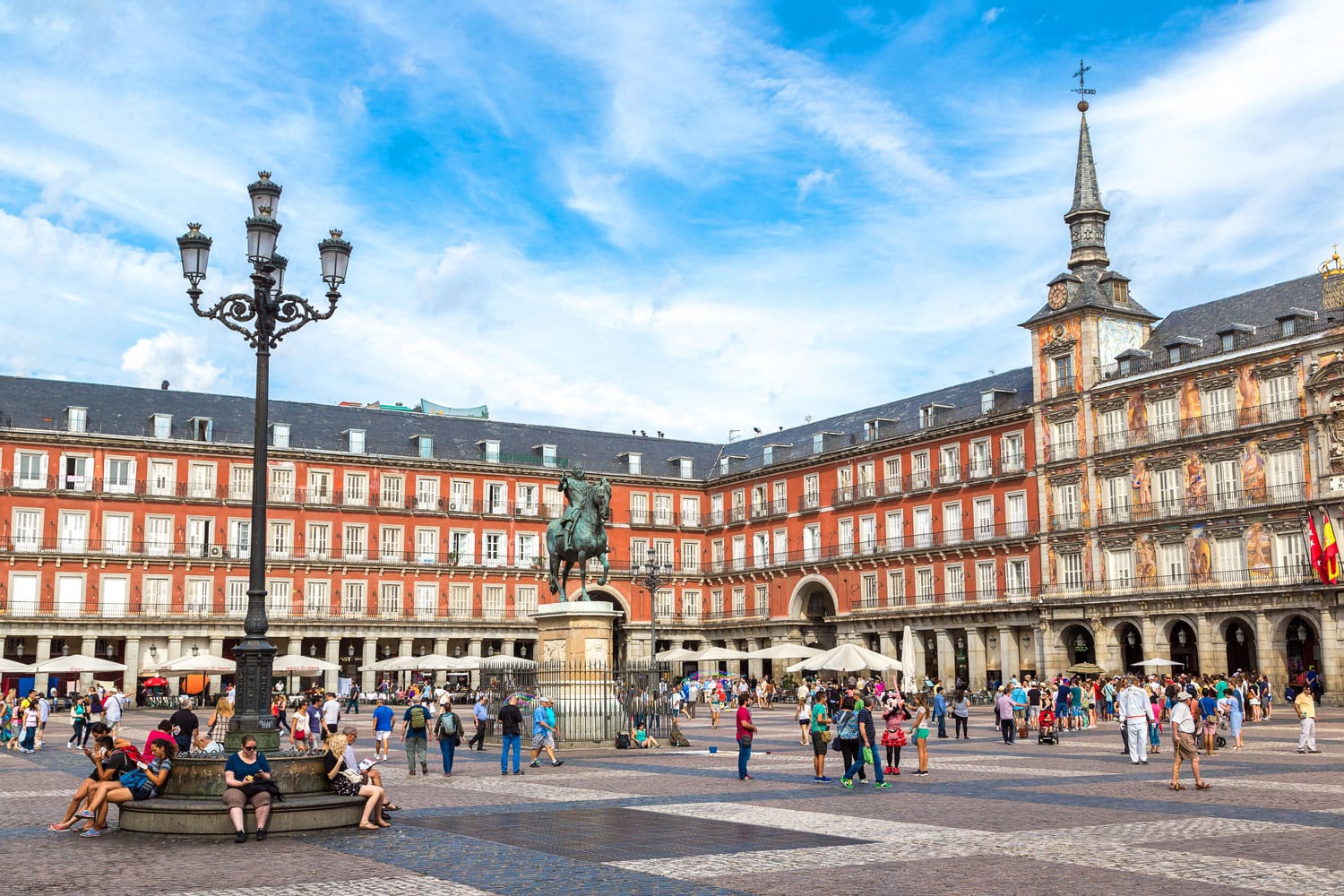
Day 2: Madrid
On day two you have the chance to shape your Spain itinerary however most interests you. Madrid has plenty more cultural attractions and activities that you could spend the day exploring, but so do the surrounding parts of Spain. There are some fantastic day trips from Madrid, so the choice of one or combination of a few of the following is yours to make:
- Reina Sofía Museu: A vast art museum, the Reina Sofia Museum is full of works by 20th century Spanish masters like Picasso and Dali showing the depth of talent in Spanish art.
- Santiago Bernabéu Stadium: Football is beloved in Spain and in Madrid there’s no better place to experience that passion than at the home ground of Real Madrid. You don’t need to show up on game day as you can take a tour of the stadium and see the dressing rooms, the presidential box and more on most any other normal day.
- Segovia: A classic day trip from Madrid, the ancient city of Segovia delights with its historic sights. Be sure to see the spectacular Roman Aqueduct that somehow still stands, or walk the streets of the traditional Jewish Quarter. Be sure not to miss the mighty Alcázar fortress where you can see the castle rooms and sweeping views from the tower.
- Toledo: If you want to see a city which has fully retained its historic character, a day trip to Toledo is a great idea. Inside its city walls and among its narrow medieval streets, there are two huge landmarks which dominate Toledo’s skyline, the Cathedral of Toledo, and the Alcazar. Through Toledo you can also find remnants from the city’s historic Christian, Jewish, and Arab communities, true to its multicultural past.
Recommendation: To get the most out of your second day in Madrid, take a look a this full day tour to Toledo and Segovia. Not only do you get to admire the main attractions of these two cities, but also get to visit the Alcázar which was the inspiration for Walt Disney’s famous castle. This tour is perfect for people who are short on time but still want to visit all the best of Spain.
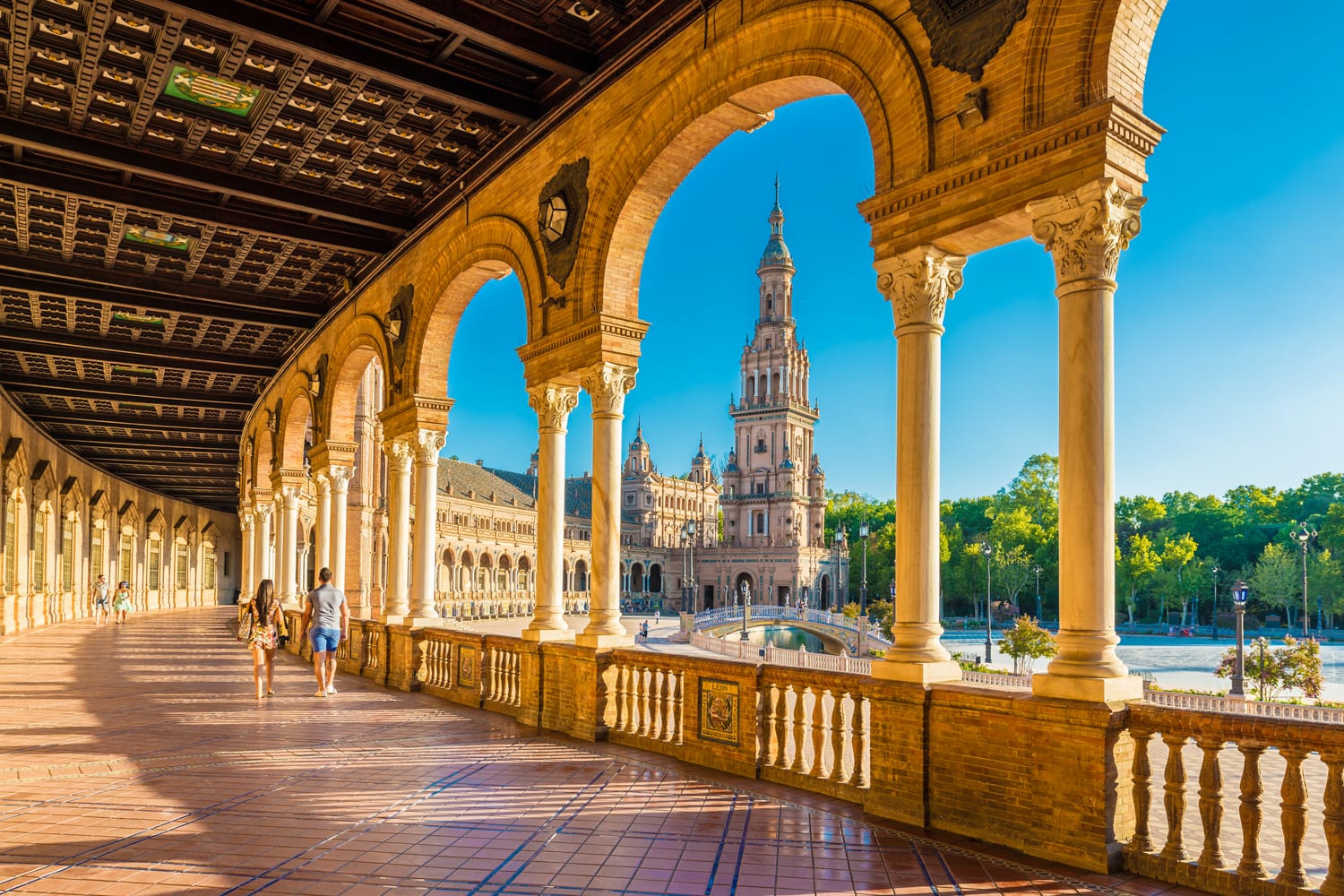
Day 3: Seville
Down in the region of Andalusia we arrive in the superb city of Seville. Thanks to its exciting mix of Spanish and Moorish architecture, but also due to its cultural traditions of flamenco and tapas, Seville easily wins over most who visit.
In Seville, you’ll want to see the Real Alcazar pretty much as soon as you arrive there. This incredible royal palace and gardens with spots like the Patio de las Doncellas are a sight to see and recognizable to Game of Thrones fans. Just across the street you’ll spot the enormous Seville Cathedral, once the city mosque and now third largest church in the world. While there you’ll want to climb up La Giralda tower for unparalleled city views.
Recommendation: To get the most out of your visit, we highly recommend you book this guided tour. Not only do you get to learn more about the history of the Real Alcazar, the Seville Cathedral, and the La Giralda tower but you also get to skip the long lines. The tour is super cheap so there is no really reason not to do it.
Back at street level, it’s nice to wander about the Santa Cruz neighborhood with its traditional homes and streets lined with orange trees. Finding your way to the major pedestrian thoroughfare of Avenida de la Constitución, you’ll soon pass the Royal Tobacco Factory and other buildings of the University of Seville.
Before you end your day, take a walk along the leafy boulevards of Parque de María Luisa and visit the photographer’s dream, Plaza de Espana. The incredibly ornate pavilion on this square was built for the 1929 Ibero-American Exposition World’s Fair but still enchants visitors today.
Best Places to Stay in Seville:
Hostal Jentoft • Hotel Fernando III • Ayre Hotel Sevilla
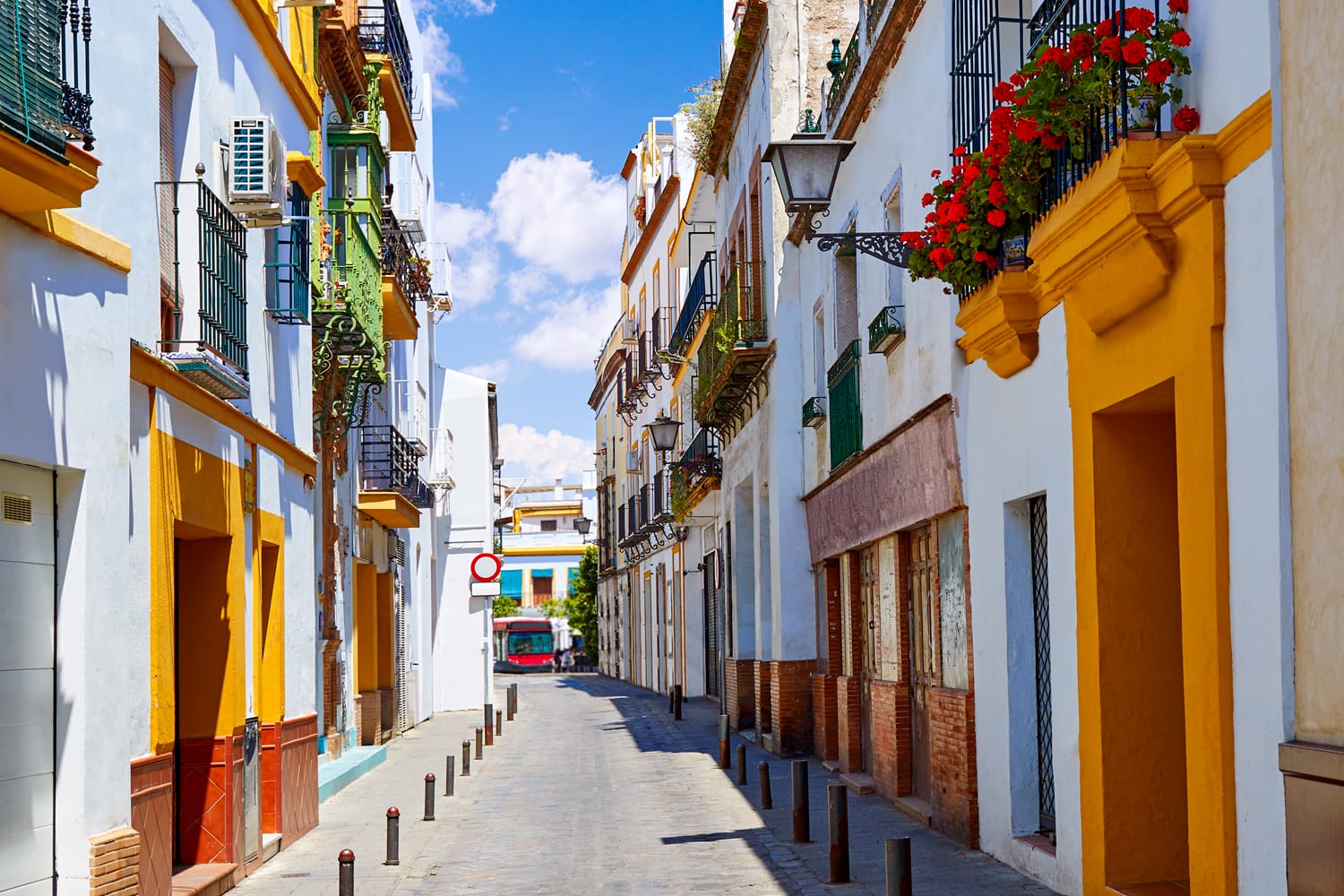
Day 4: Seville
There’s still much more of Seville to be explored, to start off, make a beeline for the Metropol Parasol, a great new modern architectural addition to the city. Once you’re done climbing over this beehive-like pavilion, head down the road to the Seville Museum of Fine Arts. Inside this old convent, the museum hosts many masterpieces created during Seville’s Golden Age of painting.
Another important cultural past-time of Seville is bullfighting, which you can learn more about in the Real Maestranza Bullring. Here you can not only see the historic arena but a museum about the sport. Next, simply cross the road from the bullring and you can walk along the waterfront of the Guadalquivir River down to the Toro del Oro, once an important city watchtower.
Having spent so much time on one side of the river, it’s time to cross over and explore everything that the Triana neighborhood has to offer. One thing you won’t have trouble finding here are flamenco bars, where you can experience this powerful art form of music combined with dance. Afterwards, hunt down some tapas either here in Triana or back in the city center.
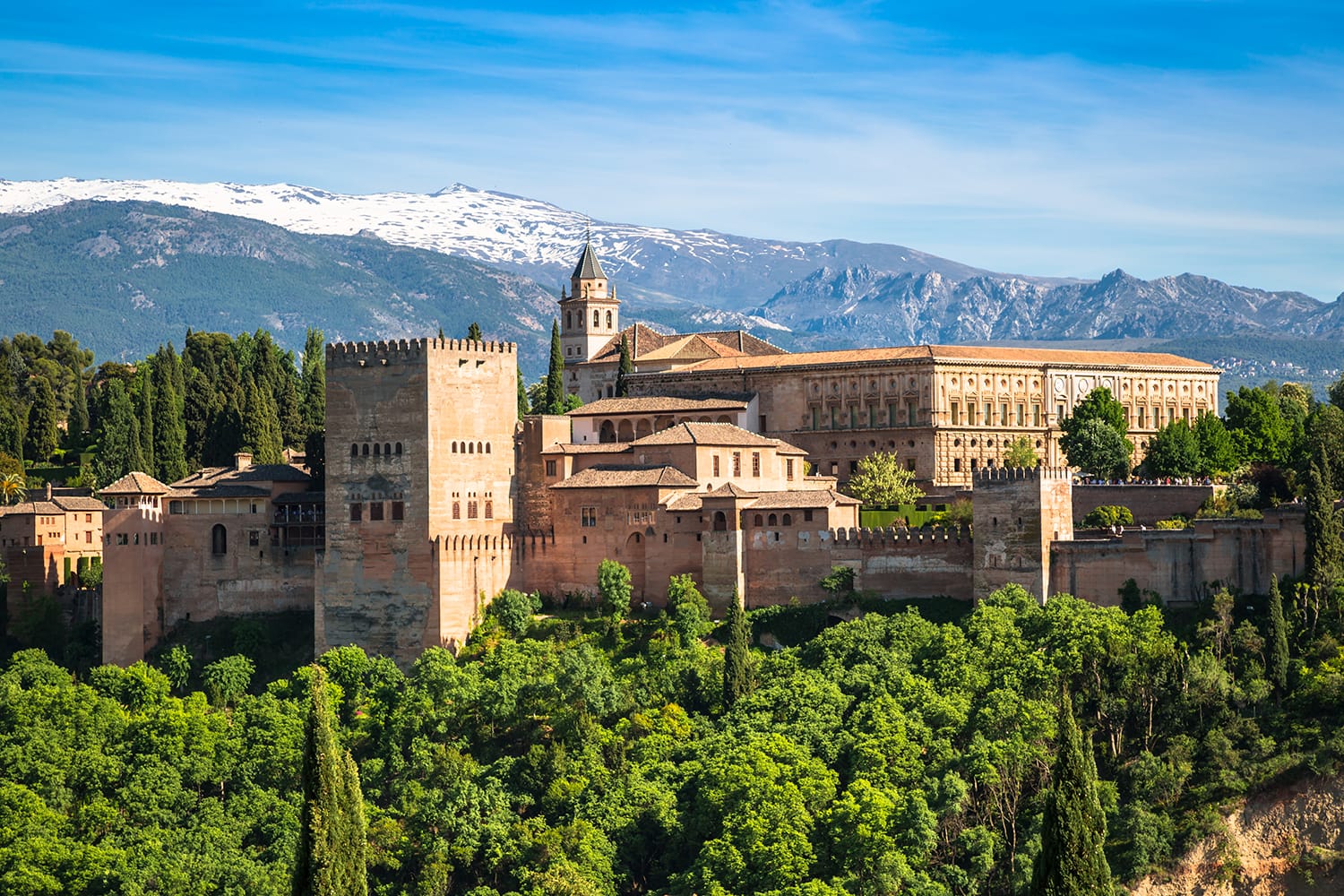
Day 5: Granada
Next on our Spain itinerary, we have a short stop in another Andalusian gem, Granada. Though you could spend several days discovering all the sights of Granada, there’s really only enough time on this trip for a single day.
Start off your day in the city center at the Granada Cathedral. This colossal building stands out from a mile away and feels just as daunting from inside its hallowed, echoing halls. From there you could head through the old Islamic Grand Bazaar, see the Royal Chapel, or roam the streets of the whitewashed Albaicín neighborhood.
Ultimately though, with one day in Granada you’re going to spend most of your time at the world famous Alhambra. An immense hilltop fortress, the Alhambra is almost the size of an entire town all on its own and it is where you’ll see most of Granada’s most incredible spots. Take, for example, the gardens of the Generalife, full of fountains, hedges, and panoramic terraces.
The real star attraction of this former Moorish palace complex though are the Nasrid Palaces, due to their exquisite Islamic design and reflecting pools. Make sure to purchase tickets well in advance, even if you can only get nighttime tickets, a visit here is a must while in town.
Best Places to Stay in Granada:
Anacapri • Hotel Alixares • Hotel Granada Center

Day 6: Valencia
Journeying north, your next stop is the city of Valencia. Spain’s third largest city, Valencia doesn’t have the same level of name recognition as other destinations on this Spain itinerary. Nevertheless, you won’t regret visiting.
To mix things up, begin your visit with the bustling Central Market of Valencia inside its beautiful art nouveau building. Once you’re done looking at the jamon and chorizo, step out into the city’s historic centre and walk over to the La Lonja de la Seda, a UNESCO recognised architectural wonder.
Heading past the Plaça de la Reina, a fixture of the city, venture over to the Valencia Cathedral and the El Miguelete tower. Its inside this Gothic cathedral that you can see a chalice said to to be the Holy Grail itself. Of course, the views from the top of the bell tower aren’t bad either. From there, wander over to the Serranos Gate, a gargantuan set of towers once part of the city walls.
The rest of the afternoon or evening, wander through El Carmen and soak up its bohemian atmosphere. You’ll come across all sorts of bars and restaurants inside converted palaces here. Plus, there’s no other way to round out your first day here than with a helping of Valencian paella, the city’s signature dish, for dinner.
Best Places to Stay in Valencia:
Hostal Venecia • Sorolla Centro • Vincci Lys

Day 7: Valencia
While we’ve seen the historic side of Valencia, there’s much more to the character of the city than that. This becomes immediately obvious once you reach the City of Arts and Sciences, a vast, hyper-modern complex of cultural venues and architectural gems. Firm favorites include the L’Oceanogràfic aquarium and the Hemisfèric planetarium. Ideal for families with young kids.
Immediately next to the City of Arts and Sciences and curving right around the historic center is the Jardín del Turia. Believe it or not, this used to be where the River Turia flowed through Valencia and now is a perfectly landscaped park ideal for a break from the city.
There’s several ways you can spend the rest of your time in Valencia. The city is home to countless great museums, with fine art on display at the Museu de Belles Arts de València, history on the city’s silk trade at Museu de la Seda, and history from the Stone Age at the Prehistory Museum of Valencia. Alternatively, pop over to Malvarrosa Beach and take it easy with the sun and the surf.
For even more info on what to do, where to stay, and how to get around take a look at our detailed Valencia itinerary.

Day 8: Barcelona
Your last stop on this trip through Spain is the ever-popular city of Barcelona. Over on the coast of Catalonia, this is the perfect place to end your Spain trip on a high note.
Beginning in the downtown area of Barcelona, you can start with the first of many surreal buildings in Barcelona designed by the famous local architect Gaudi at the Casa Batlló and Casa Mila. Make sure to pop up to the rooftop of Casa Mila, also known as La Pedrera. Head through the downtown area, past the lively Placa de Catalunya, and you’ll soon be on La Rambla, the city’s main leafy boulevard.
La Rambla will eventually bring you into Barcelona’s Gothic Quarter, the city’s atmospheric Old Town. Walking its medieval streets, there’s plenty of sights to take in here including the Cathedral of Barcelona and the picturesque Bridge of Sighs. Another popular spot for tourists in this part of town is the Boquería Market, full of food and produce.
It’s also not far from the Güell Palace, another Gaudi-designed mansion that you’ll want to see inside and out. From there, make your way across the historic center to celebrate another creative Spanish mind at the Picasso Museum. You’ll be hard pressed to find a bigger collection of artwork by Pablo Picasso with thousands of his pieces exhibited here.
After all of this, end your day here with a trip down to La Barceloneta, the city’s fun and vibrant beachfront. Whether you choose to lie on the sand, go for a stroll or get a drink while you watch the sunset, it’s the perfect place to unwind.
Best Places to Stay in Barcelona:
Hostel One Sants • Hotel Lloret Ramblas • Exe Cristal Palace

Day 9: Barcelona
On day two there are still some of the best things do in Barcelona yet to be uncovered.
In Barcelona, you really can’t get away from Gaudi and nor would you want to once you see Parc Güell. Situated in the foothills near the edge of the city, Parc Güell is best known for the Dragon Stairway and mosaic covered viewing terraces designed by Gaudi. Here you’ll also find the Gaudi House Museum, where the acclaimed architect lived for a time.
Not all of Gaudi’s works were completed, as famously can be seen at the La Sagrada Familia basilica. Unfinished for over a 100 years, this church is a beautiful sight to behold regardless, especially when viewed from inside its dazzling central nave.
Recommendation: Getting a skip-the-line ticket for La Sagrada Familia is highly recommended, as lines can get crazy long. You can also buy your ticket to Park Güell in advance here, if you want.
Back towards the city center, make your way to the Arco de Triunfo. Besides being a majestic 19th century archway, it also leads you through to the Ciutadella Park. This park is not only home to green space and fountains like the Cascada Monumental, but also major landmarks like the Catalan Parliament and the Castell dels Tres Dragons exhibition center and museum.
A great way to finish the day is with a trip across the city again, this time up to Montjuïc Mountain. Home to Montjuïc Castle with its military museum and reached by cable car, you should come up for the views of the port and coast.

Day 10: Barcelona
With plenty of other places to visit in Catalonia, Barcelona is an ideal starting point for day trips. Whether you explore the countryside, the beaches, or other cities in the region is up to you. To give you somewhere to start though, some more common day trips from Barcelona are:
- Montserrat: Off in the mountains outside of Barcelona, this mountain range is great for hiking as well as general sightseeing. With plenty of trails across different difficulties, you have your pick of peaks to hike and rocky scenery to take in. For a gentler time, seek out the Abbey of Montserrat and visit the statue of the Virgin Mary that’s said to perform miracles. You can reach Montserrat by train or on a guided tour from Barcelona. The tour also includes tapas and wine tasting at the 10th-century Oller del Mas castle.
- Girona: Catalonia is not short on beautiful cities, as is shown by the historic city of Girona. Known for its charming riverfront views, Girona also boasts enchanting medieval walls, an atmospheric Jewish Quarter, and quite the striking Cathedral. You’ll happily get lost among its city streets even though it’s nowhere near the size of Barcelona. It’s also another filming location that Game of Thrones fans will want to see up close. You can book a guided tour to Girona from Barcelona here.
- Sitges: Spain’s most famous beaches and coastline tend to be found much further south, yet you can’t argue with the beach town of Sitges. With multiple beaches within easy reach, Sitges is unsurprisingly quite a popular resort destination. You won’t mind though as you walk around its idyllic historic center. The big decision though is whether you stick around to revel in the town’s lively nightlife or head back early.

Day 11+
With this 10-day Spain itinerary, the idea is to take you through as much of the best of Spain as is possible in that timeframe. We’ve shown you the destinations that you simply can’t miss, but that doesn’t mean there aren’t plenty more great places out there. If you have the time in your Spain itinerary to visit more places in Spain, then other great destinations include:
- Andalusia: Even after you’ve visited Seville and Granada, there are countless other great cities and towns that you can visit in Andalusia. This fantastic region in the south of Spain is just bursting with cultural, historical, and beautiful places to visit. There’s the ancient Roman and Moorish landmarks of Cordoba, the dynamic coastal city of Malaga, little Ronda with its magnificent bridge and all the beaches along the Costa del Sol.
- San Sebastian / Bilbao: The two major cities found in Basque Country up north, San Sebastian and Bilbao, couldn’t be more different. One is a stunning beachfront city with Belle Epoque architecture, the other is a city full of big cultural institutions and strikingly modern buildings like the Guggenheim Museum. What they have in common though is their celebrated food and bar scene, so you could spend all your time eating and drinking and still have a good time.
- Mallorca: To see a different side to Spain, consider a visit out to Mallorca, one of the Balearic Islands. While it may be best known for its beachfront resorts and habit of attracting young partiers with places like Magaluf, Mallorca is full of sights and character all their own. Among its rugged countryside and seaside coves, there are scores of quaint little villages begging to be explored. And let’s not forget the main city of Palma which mixes cultural attractions with a good dose of shopping and bars.
You’ve now got everything you need to know about how to see Spain in 10 days. Hopefully now planning your trip to Spain is an absolute breeze and the hard part will be the wait until you get there.



